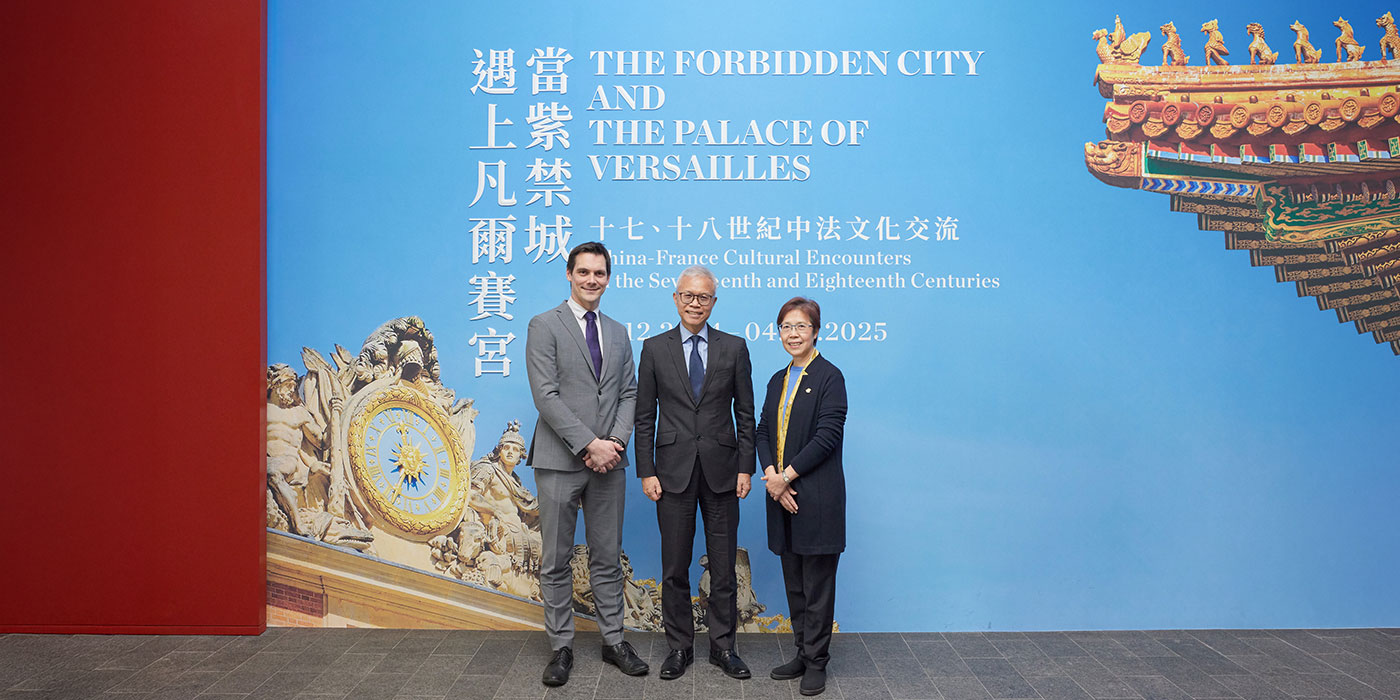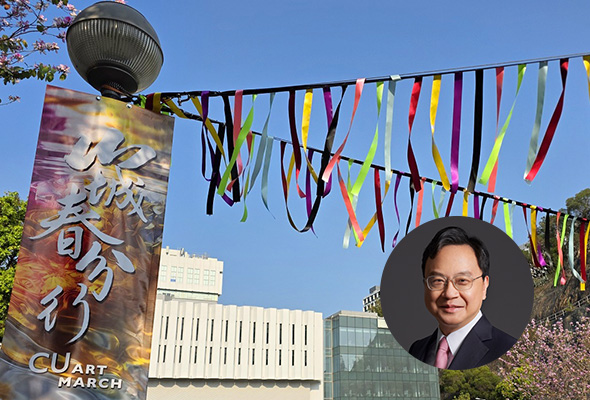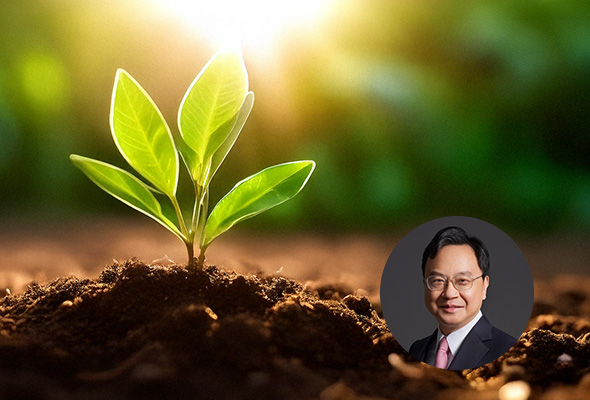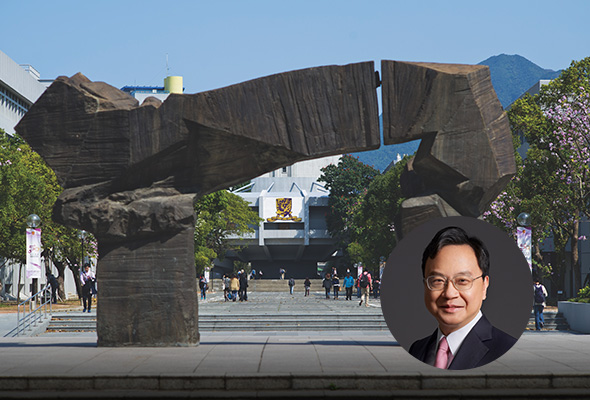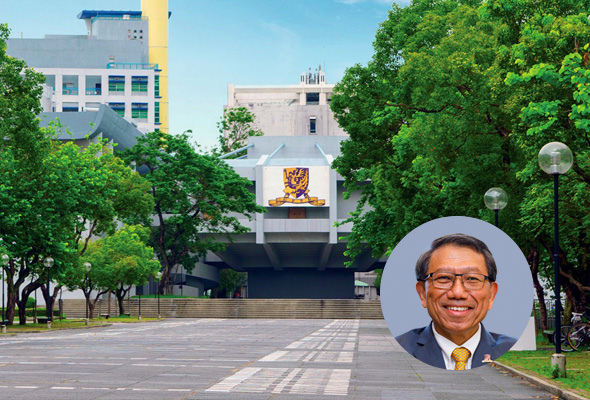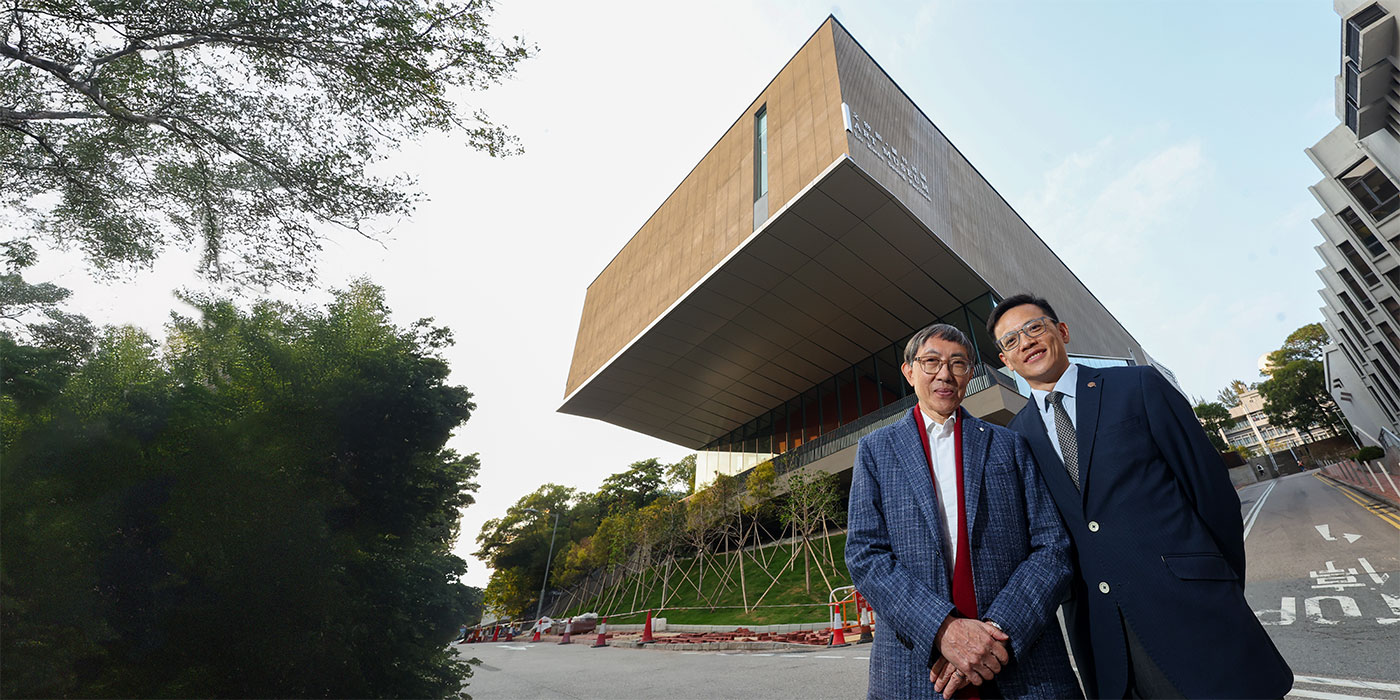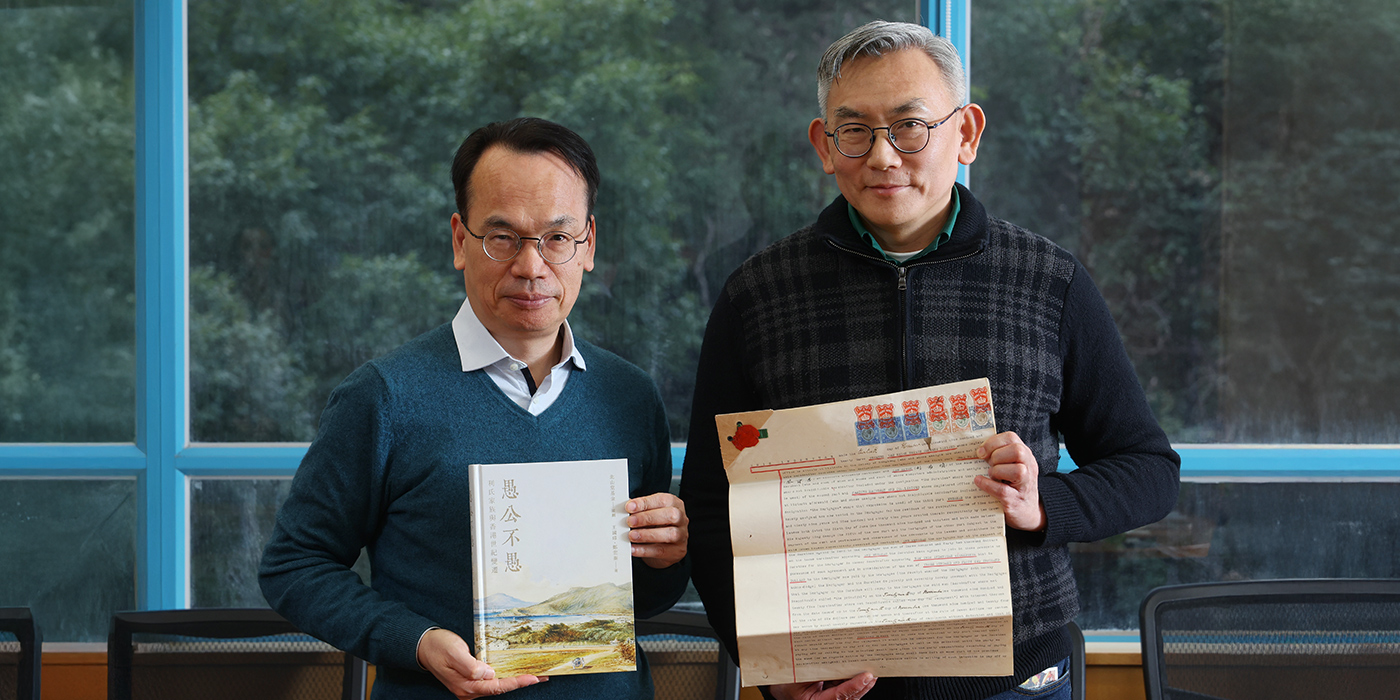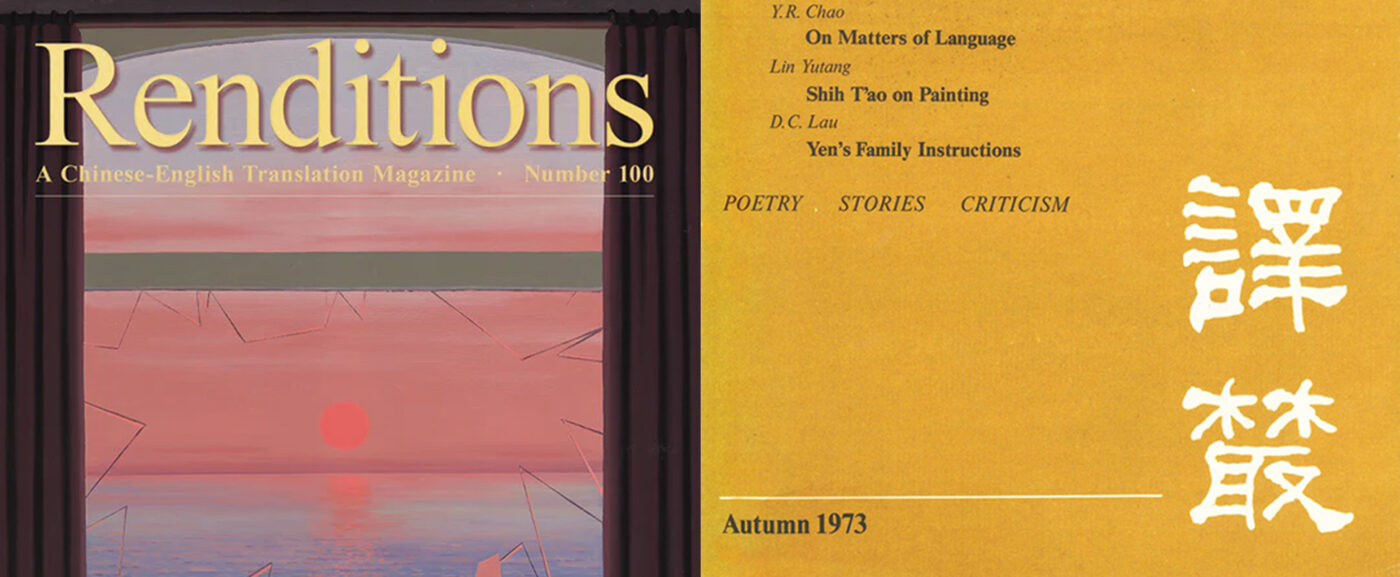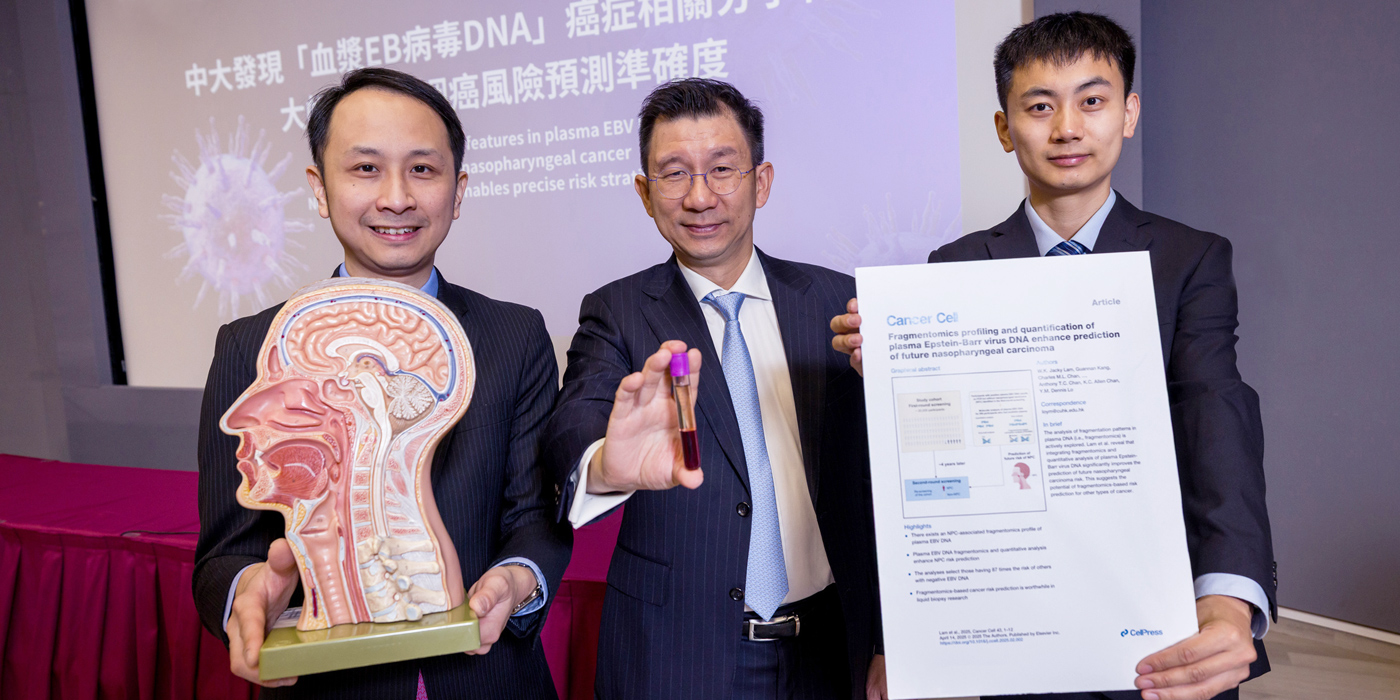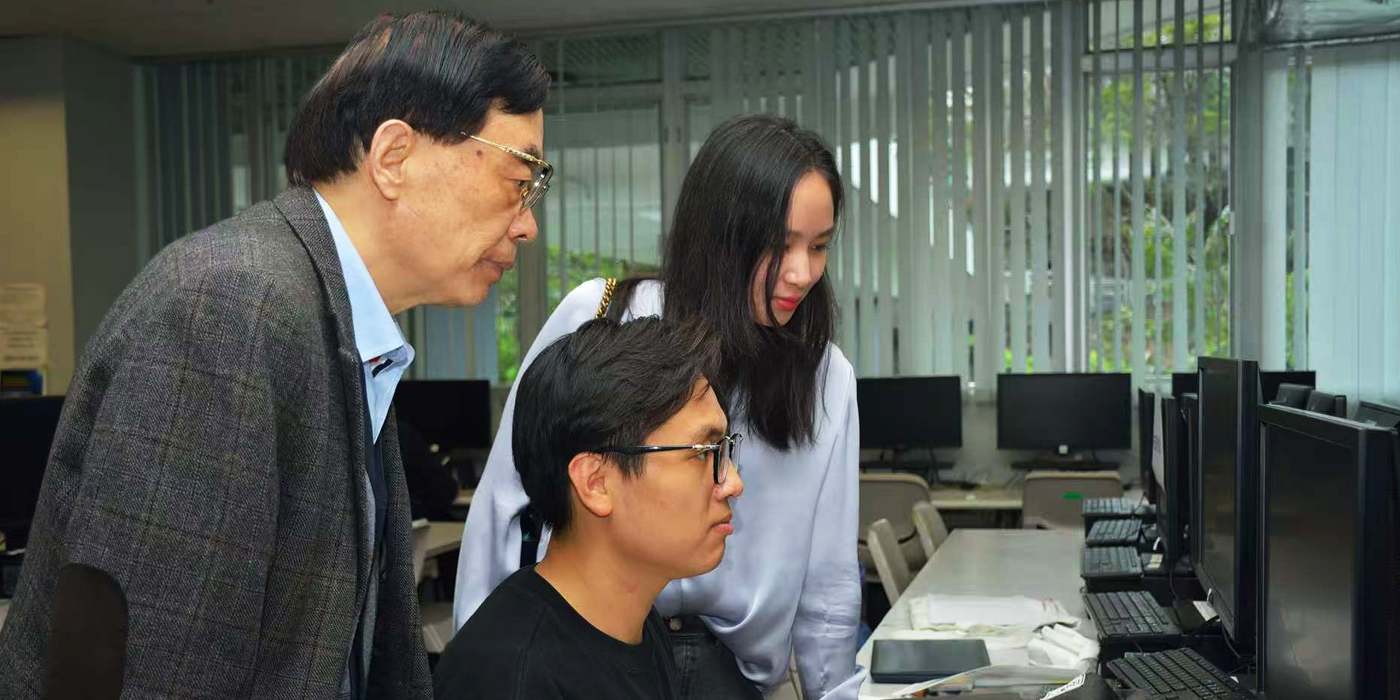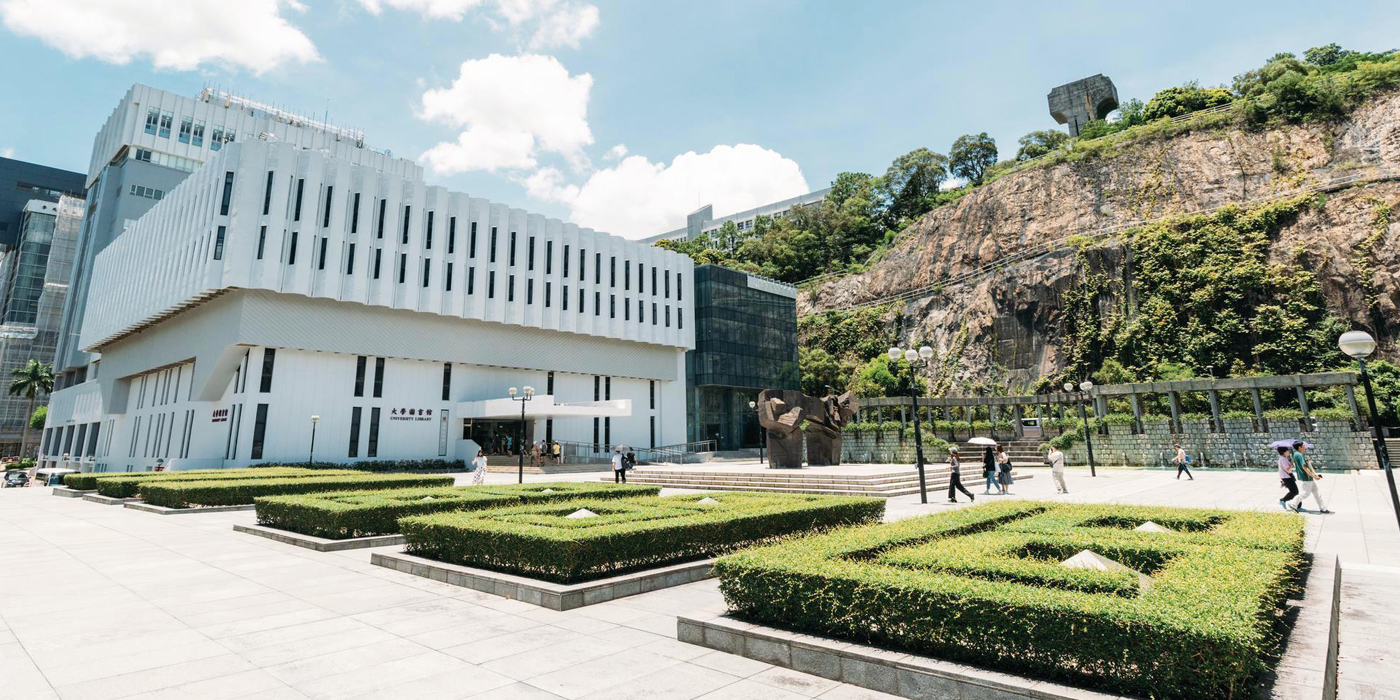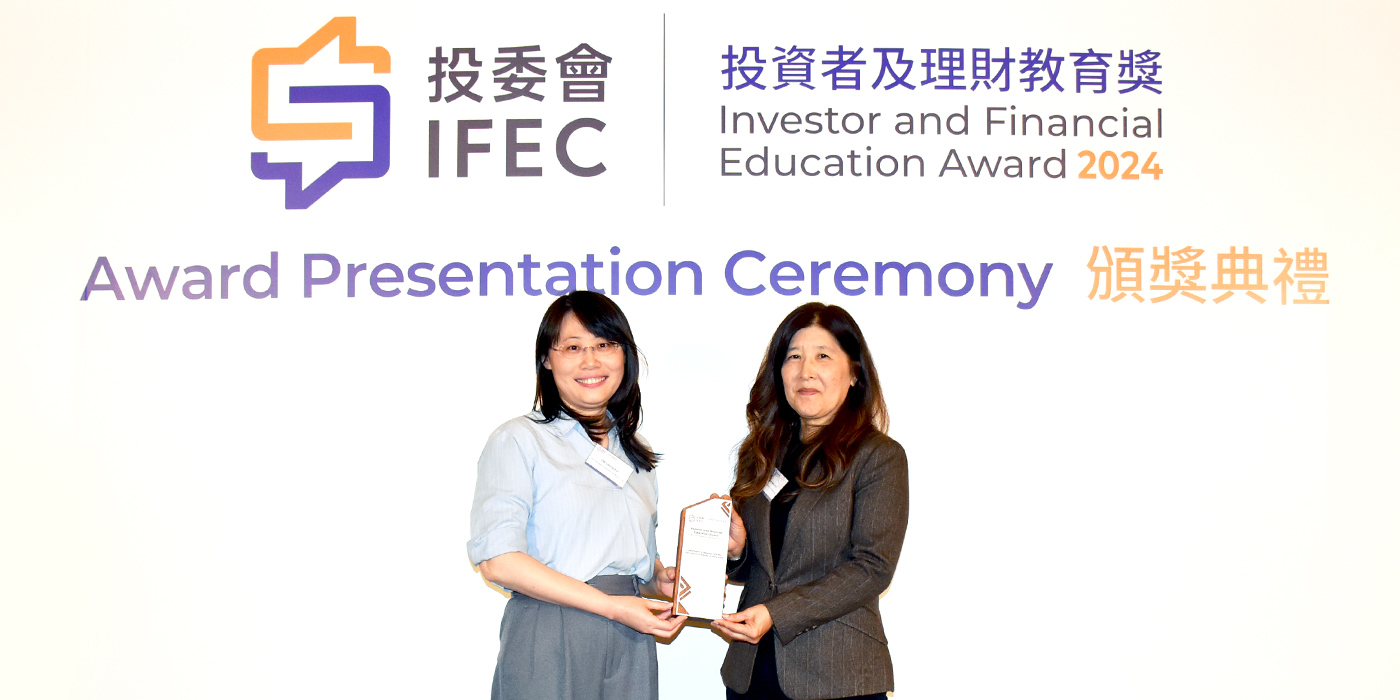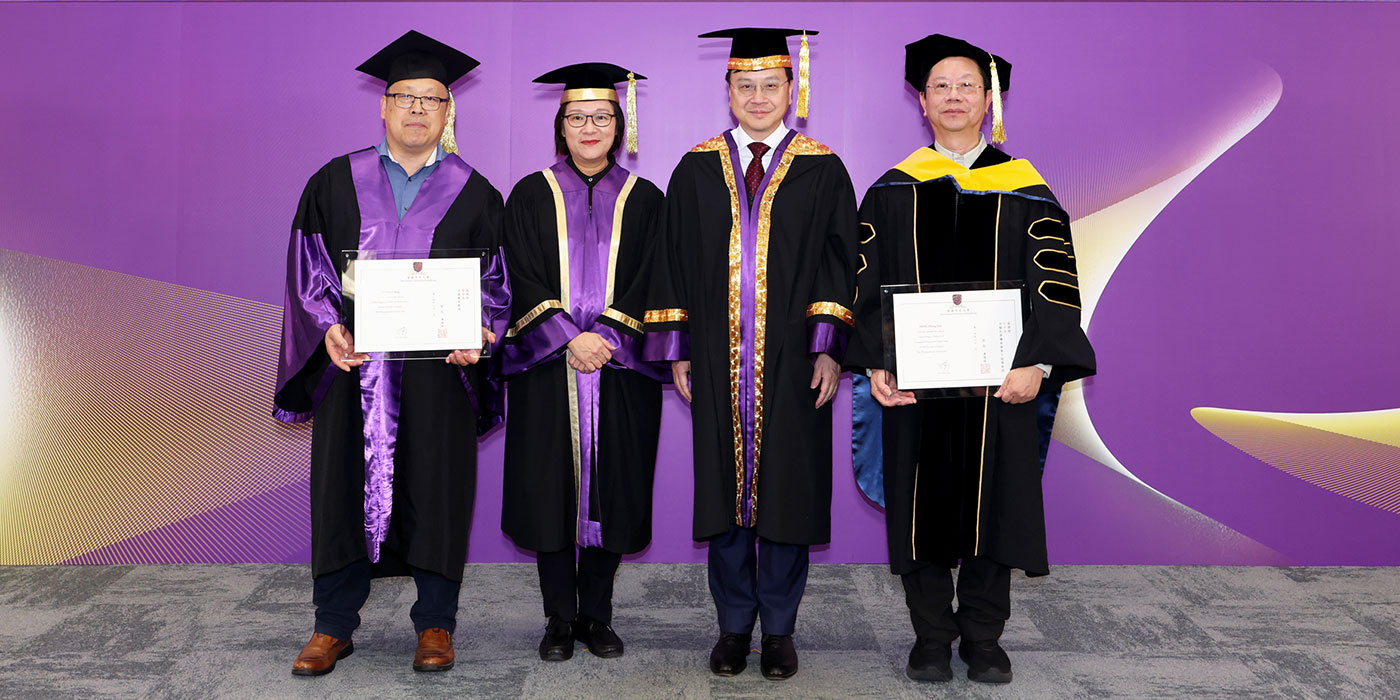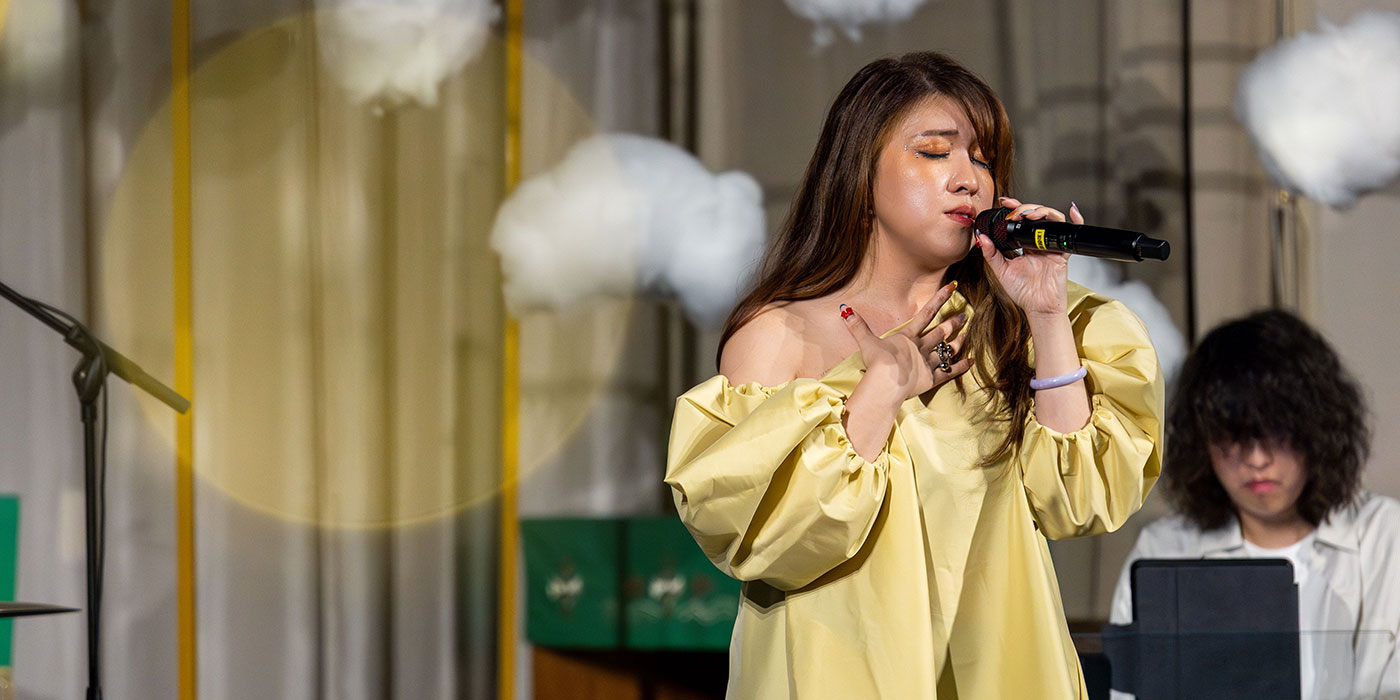The University Librarian of CUHK, Benjamin Meunier (left); Director of the Hong Kong Palace Museum, Dr Louis Ng; and Associate University Librarian of CUHK, Li Lai-fong
A bridge between cultures at the Hong Kong Palace Museum
CUHK Library’s rare books illuminate 350 years of exchange between France and China
12 March 2025
At the entrance of the Hong Kong Palace Museum special exhibition ‘The Forbidden City and the Palace of Versailles: China-France Cultural Encounters in the Seventeenth and Eighteenth Centuries’, a panoramic video featuring both palaces greets visitors. On show, nearly 150 treasures including rare books borrowed from the Chinese University of Hong Kong Library cast light on Sino–French intellectual and cultural interactions.
Visitors also come face to face with an immersive multimedia installation that brings to life a letter written by King Louis XIV to Emperor Kangxi in 1688. Composed in French, the letter conveyed the king’s wish to send Jesuits to share scientific knowledge with his Chinese counterpart, “our very dear and good friend”, and expressed his admiration and desire for cultural exchange.
Although the letter never reached its intended recipient, five “king’s mathematicians” arrived in China. They were admitted to the emperor’s court, where they won Kangxi’s trust with their mathematical, medical and astronomical knowledge. The Frenchmen ended up serving as tutors to Kangxi and also earned his favour by curing his fever with quinine.
Another 40 French Jesuits followed their footsteps and introduced Western scientific advancements but also documented Chinese culture extensively upon their return to France. Their work laid the foundation for modern Sinology in Europe. In 1696, Father Le Comte, a member of the king’s mathematicians, published New Memoirs on the Current State of China, which is one of CUHK Library’s rare books on display.
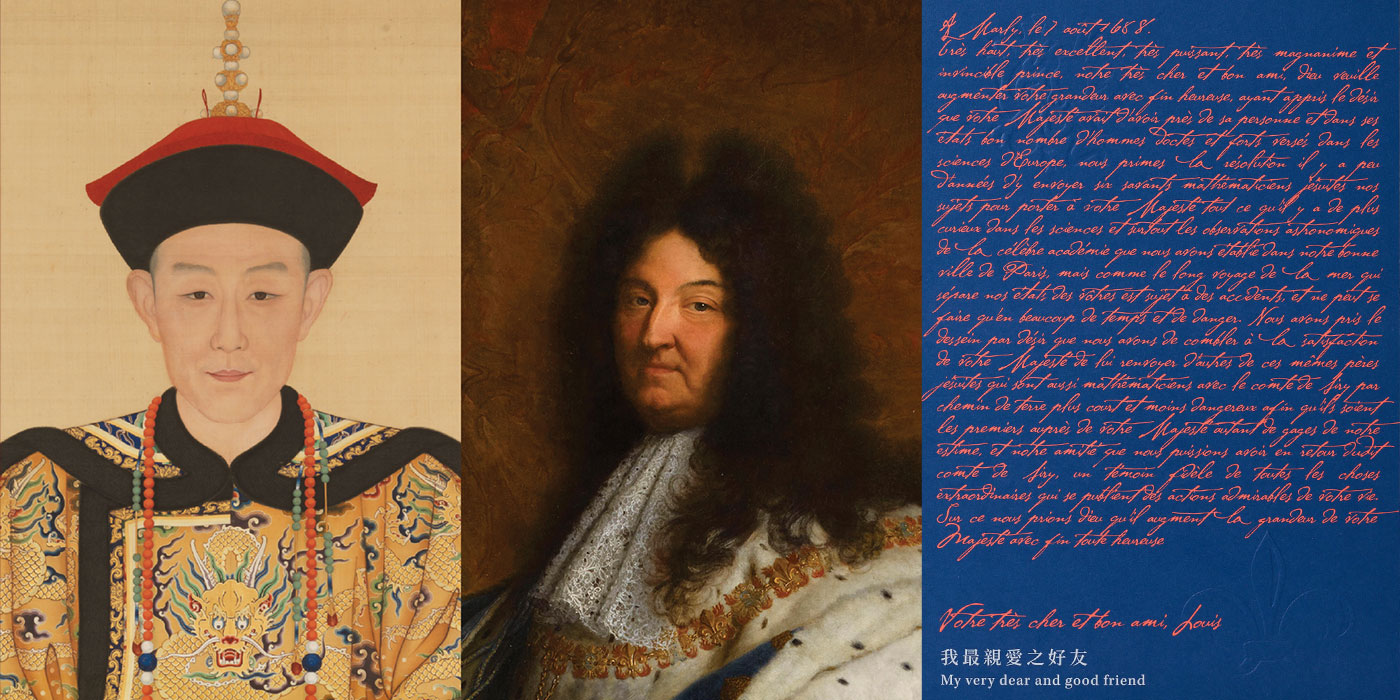
To commemorate the 60th anniversary of China’s establishment of diplomatic relations with France, the exhibition tells of the special bilateral bonds which were forged through mutual admiration and respect, and which provided new incentives to expand skills and knowledge and create new art forms. Prized treasures from both palaces are featured and juxtaposed at a single show in Hong Kong for the first time.
During preparations, the Hong Kong Palace Museum had decided to adopt an innovative curatorial approach and showcase rare books. The items selected from the Special Collections at CUHK Library are the first set of rare books loaned to the Hong Kong Palace Museum. “It will enrich visitors’ exploration of the knowledge exchange between China and France through French Jesuits 350 years ago,” says Dr Louis Ng, Director of the Hong Kong Palace Museum and a CUHK alumnus.

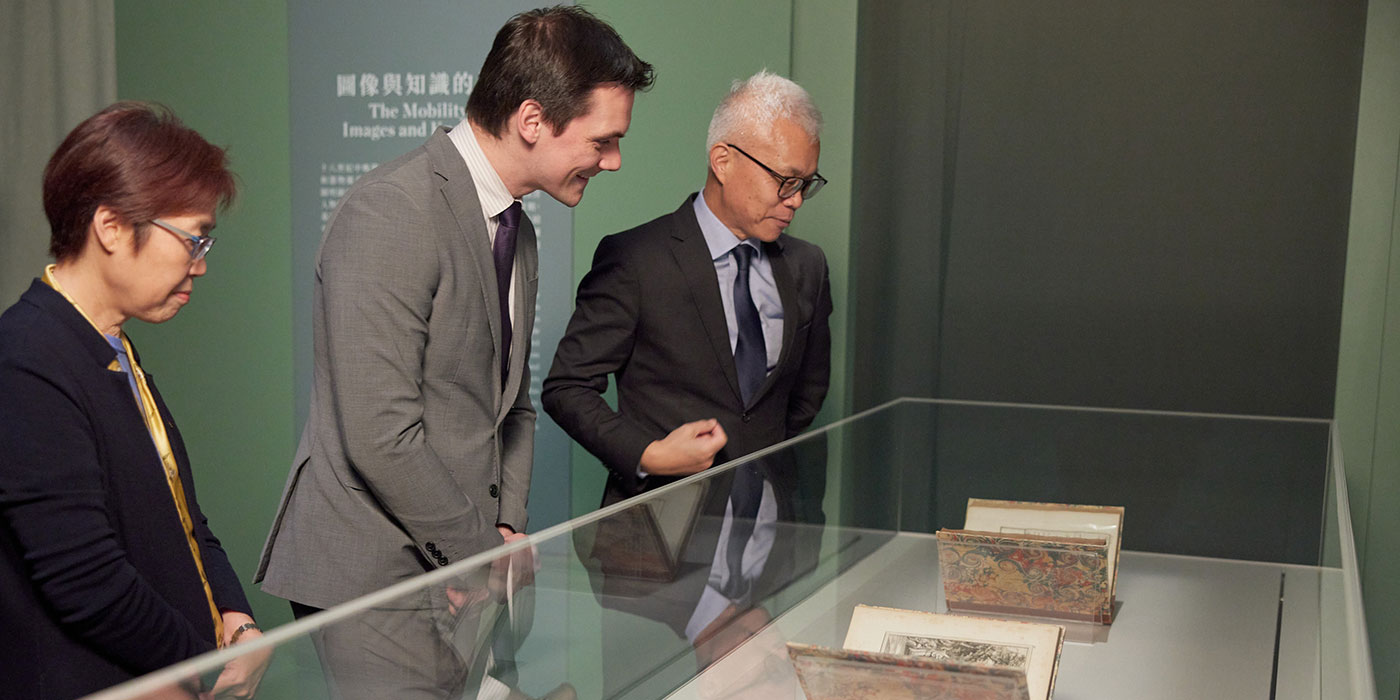
Power of the pen
The ongoing museum exhibition explores Sino-French exchanges in science, diplomacy, craftsmanship, art and philosophy. CUHK Library’s five rare books add a crucial literary dimension to this narration. University Librarian Benjamin Meunier says “Whereas gilded clocks or fine porcelain sets would have adorned imperial and royal courts, which a small number of people would have ever seen, these books reached thousands through literary salons and were copied as source material for other popular titles. They would have been significant vectors for understanding Chinese culture in Europe.”
One section highlights how Jesuits introduced European scientific knowledge to China while simultaneously bringing Chinese philosophical texts back to Europe. CUHK’s books provide tangible evidence of this intellectual cross-pollination, illustrating contribute to a dynamic dialogue that transcended geographical boundaries. Chinese intellectuals in the late 19th and early 20th centuries translated French works into Chinese to understand Western political systems and philosophies better.
Similarly, Enlightenment thinkers such as Voltaire were inspired by Confucian ideals, which enriched perspectives on governance and ethics in Europe. China offered a tangible example of a society where moral principles were clearly articulated without the presence of an organised Church. Around 1788, French Jesuit Joseph Marie Amiot compiled the Illustrated Historical Summary of the Life of the Famous Chinese Philosopher Confucius, reflecting Europeans’ growing interest in Confucianism at that time.
“The General History of China reinterpreted Chinese historical anecdotes for a French audience”, says Li Lai-fong, Associate Librarian of CUHK Library. The title was one of the Europeans’ most important sources of information about China in the 18th century, covering history, geography, society, philosophy, administrative structure, language, daily life, art and religion. “The richest and most splendid description of the Chinese Empire in the world”, as Voltaire described this book, is also on loan in the exhibition.
Today, this legacy of reciprocal exchange continues through academic collaborations between Chinese and French institutions. Agreements between universities in both countries have also emphasised joint research in mathematics and artificial intelligence.
Last October, a leading academic from the Toulouse School of Economics attended as a VIP guest for the launch of the AI exhibition in CUHK Library. Jean-Francois Bonnefon then delivered the first lecture in the CUHK “Ethics in AI” series on “Behavioral Science for AI Ethics and Governance”. “CUHK also has a long-standing partnership with Aix-Marseille Université to support the ongoing development of collections related to the works of Nobel prize winner Gao Xingjian in European and Asian languages,” Meunier adds.
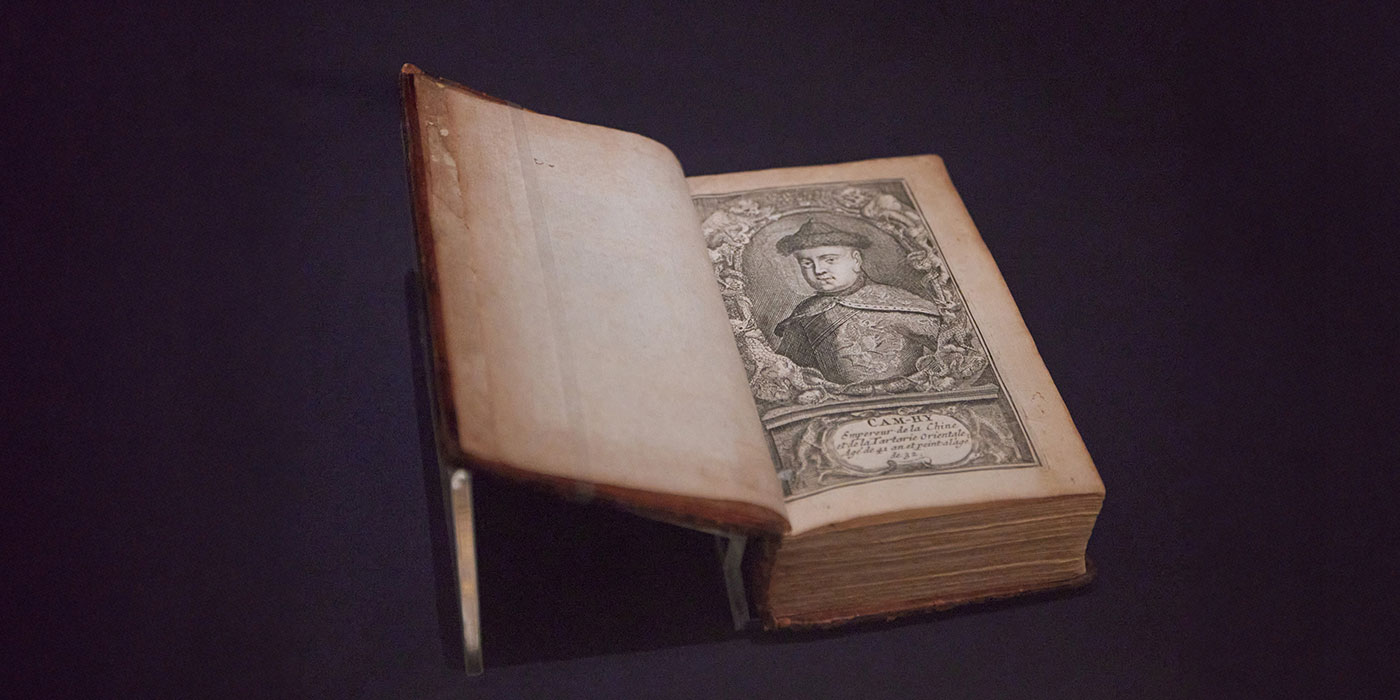
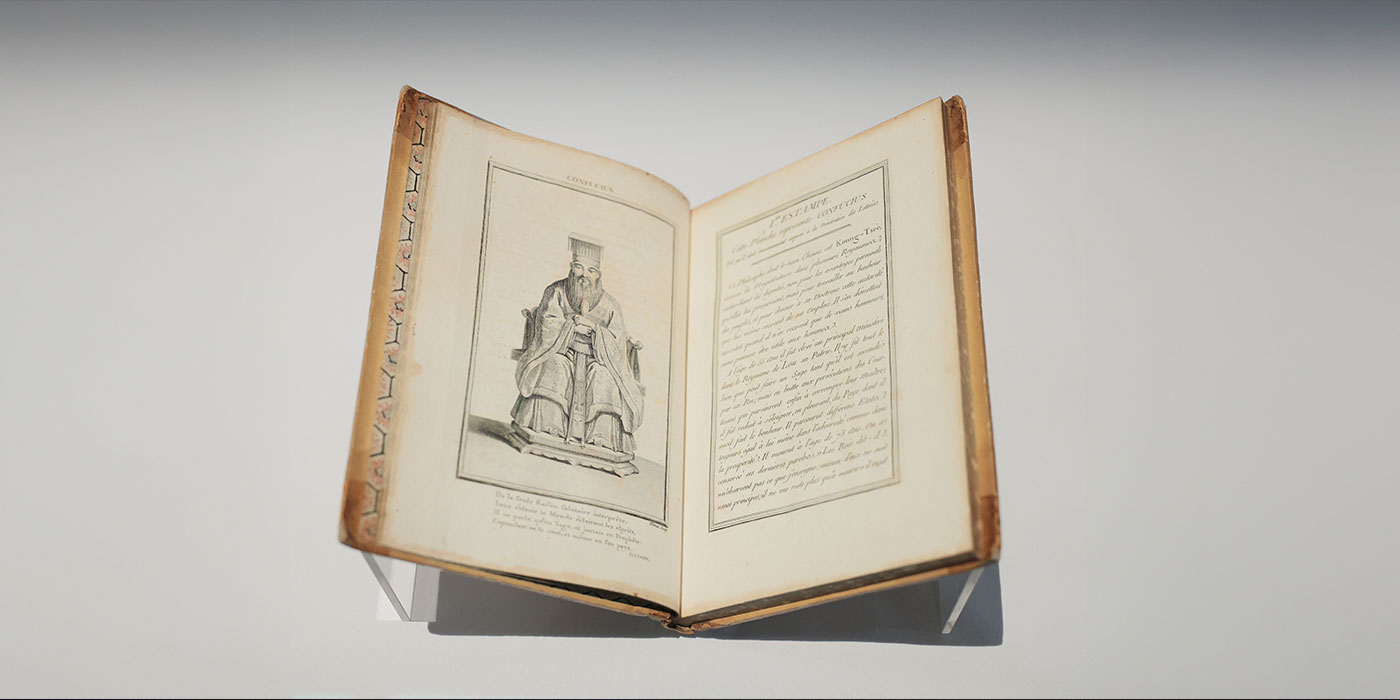

An academic-cultural pursuit
The partnership between CUHK Library and the museum to produce the exhibition exemplifies how academic institutions can work with cultural organisations to preserve heritage and educate the public. It marks their first collaboration since the museum’s opening two years ago. The library’s extensive collection of rare books—particularly on early modern Western Sinology—was instrumental in filling critical gaps in the show’s narration.
Moreover, this exhibition highlights the importance of access in cultural heritage. By lending these rare books to the museum, CUHK Library reaches a wider audience and fosters greater appreciation of their historical significance. Such partnerships also underscore Hong Kong’s role as a global hub for cultural exchange, a mission shared by both CUHK Library and the museum.
Generous support from donors and funders combined with the library’s proactive approach to curation has been pivotal. Over the decades, University Librarians including Dr Colin Storey and Ms Louise Jones have enriched its collection by acquiring rare Western Sinology books. This foresight has enabled CUHK to contribute meaningfully to exhibitions such as the current show, highlighting its treasures to a broader audience beyond academia. Its collection of rare Chinese books, comprising 1,100 titles in more than 16,000 volumes published before 1795, is the largest among Hong Kong libraries.
In 2020, CUHK Library had the honour of seeing 15 of its rare Chinese books selected for the sixth batch of the National Catalogue of Precious Ancient Books. It was the first time that a Hong Kong library’s collection was recognised for holding the country’s precious ancient books.
As a cultural institution, the library must continue to curate, preserve and promote Hong Kong’s unique collections. CUHK Library endeavours to provide scholars, students and the broader community with opportunities to engage with these fantastic collections. Our Special Collections team provides highly-valued service to donors and researchers, to ensure that historic material is well cared for and is put to good use for our understanding of history and culture.
Dr Ng added that he would return to research some more on the collections, and CUHK Library looks forward to welcoming more curators to join hands on future projects. Further collaboration between the library and other cultural institutions would be mutually beneficial, Meunier says “we can enhance the visibility and impact of our research collections by working with our academic colleagues in partnership with galleries, libraries, archives and museums (GLAM).”
Still waters run deep
The spread of knowledge played a crucial role in shaping perceptions between the East and the West, as CUHK Library’s rare books exemplify. In an era where printed texts were among the few media for cross-cultural communication, these books acted as bridges connecting disparate worlds. Today, they continue to inspire dialogue on how civilisations can learn from one another.
The exhibition is open until 4 May 2025 at the Hong Kong Palace Museum.
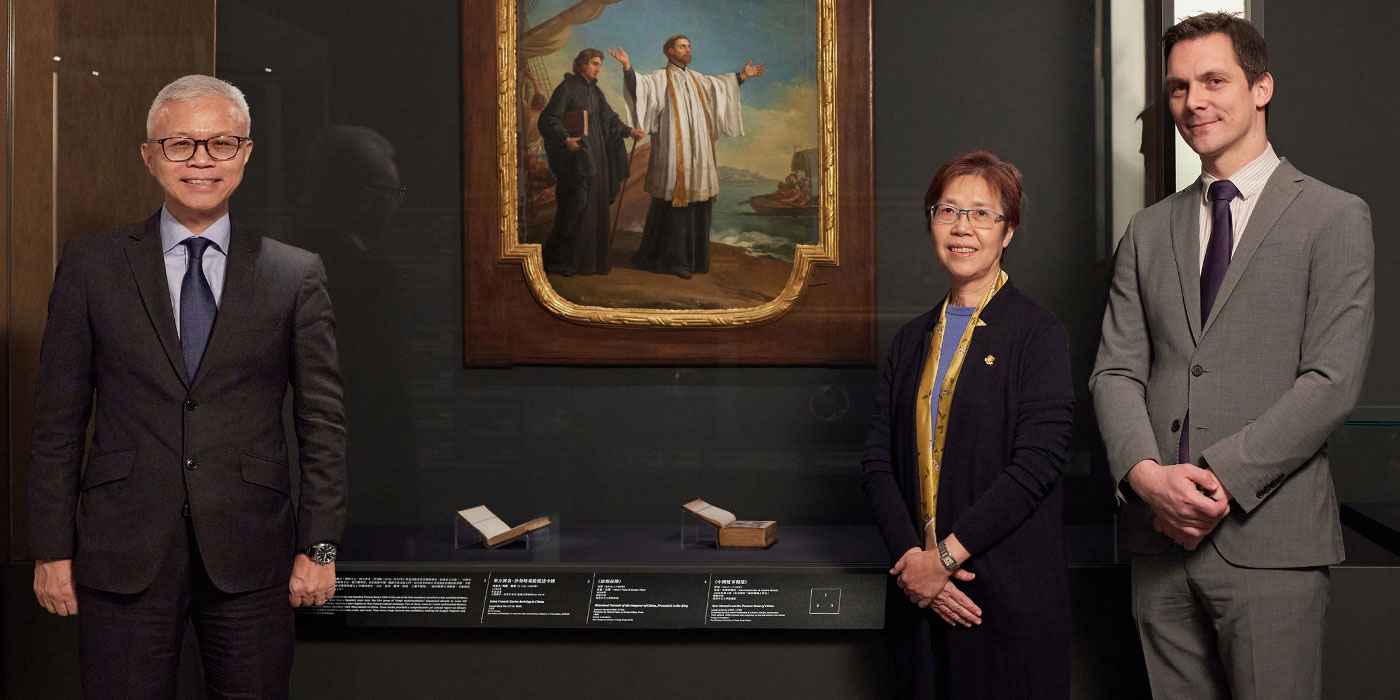
By Jenny Lau
Photos by Keith Hiro

